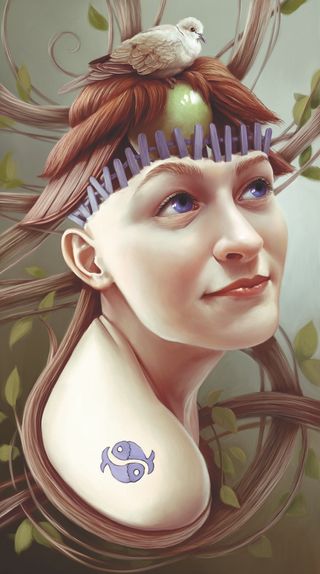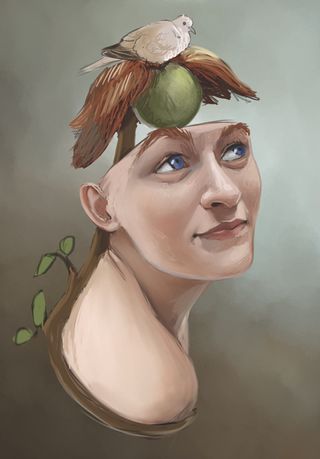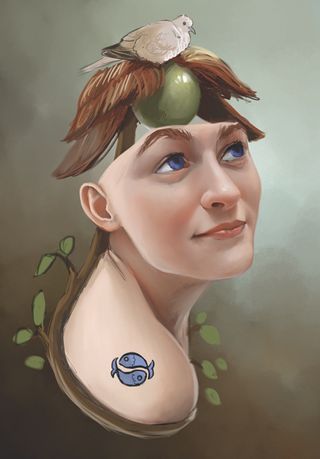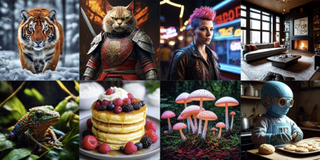
It may sound strange, but the best surrealistic images are interesting simply because they are strange! The aim of surrealism is to represent the metaphysical world of dreams where everything and anything is possible. It's an approach used by writers and painters to associate subjects without an apparent reason.
So my suggestion is to choose two or more objects that are different and totally disconnected. After that you have to find a way to combine together these objects in a strange and interesting way. You have to create in the mind of the observer one simple question: why?
You have to create in the mind of the observer one simple question: why?
Why is a woman's face, an apple and a pigeon in the same image? Maybe there's a reason or not; in a surrealist illustration this is always a secondary aspect. You have to shake the mind of your observers and show them something that's irrational and dreamlike. Key points are "no conventions" and "no logical schemes" – only freedom, madness and irrationality will work.
I create a quick illustration in Corel Painter to give an example of modern surrealistic painting. It's very simple, but gives you an idea of what's possible (hint: anything!).
In addition, a simple subject can be more interesting than a complex, busy illustration. Of course, your starting point must be the study of great masters like Dalì, Magritte or an amazing metaphysical artist like De Chirico. This can help you to find your way.
01. The first sketch

To create the first sketch I use only two layers, for the background and foreground. The starting point is a simple sketch in which I define the main shapes and colours of the various elements. The image is rough and is created using quick brush strokes. In this first step I've not defined all the elements of the final image – only the main features.
02. Complexity of composition

Now I smooth parts of the woman's face, using Painter's Smudge and Soft Blender Stump tools, which enable me to blend colours easily. Colour variations are key for the realistic shading of human skin. My workflow for every painting I do consists of a progressive process, in which I gradually increase the quality and complexity of the composition
03. Lighting the composition

I move on to the lighting, which is another fundamental element. It's important to define the direction of the main light source and create shading that matches it. Consider the location of your secondary light sources. In this case I've simulated soft lighting. I have also changed the colour palette of the skin adding more green and grey nuance
Artist's secret

Remember that surrealism represents dreamlike and irrational subjects in a realistic way. For this reason it's important to work on your shading techniques. You have to follow your style, but it's better to avoid an approach that's too abstract, because this is not typical of surrealism.
Words: Corrado Vanelli
Corrado Vanelli works full time in a factory and only paints in his free time. He’s worked with digital media since the 1990s. This article originally appeared in ImagineFX issue 103.




